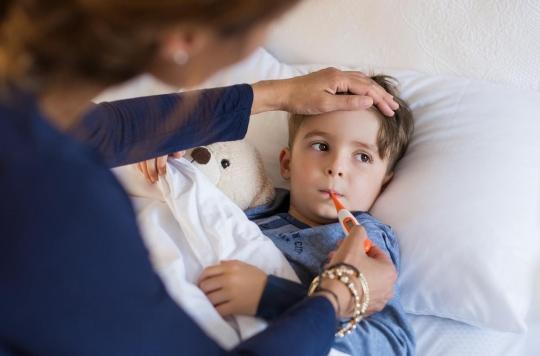With the return to school and nursery, it is good to be able to differentiate the respiratory diseases of the child in order to be able to act quickly.

- Prevention strategies against Covid-19 are also very effective in preventing influenza and bronchiolitis.
- In addition to wearing a mask and physical distancing, vaccination against influenza and Covid-19 reduces the risk of respiratory infections.
Childhood illnesses can be a challenge for parents and they were particularly so during the Covid-19 epidemic where a simple cold could risk closing a class and the risk of catching the virus was real.
Today, while the Covid-19 has not disappeared from the radar and the start of the new school year is well underway, exposing children to more contact, knowing the differences between respiratory viruses can help to gain serenity and react better.
Covid, flu and bronchiolitis have things in common
First, the similarities: these viruses all affect the respiratory system – the network of tissues and organs that help with breathing.
Thus, cough, runny nose and fever are common symptoms.
Likewise, several known symptoms of Covid, such as loss of taste and smell, are actually common to respiratory viruses like those that cause colds and flu.
This is also the case with vomiting and diarrhoea.
Wheezing is unique to bronchiolitis
What differentiates Covid-19, the flu from bronchiolitis is the wheezing it causes, which is not to be taken lightly.
Bronchiolitis is linked to an infection with the Respiratory Syncytial Virus (RSV) and results in swelling of the pulmonary artery. This viral infection affects about every year 500,000 children from 0 to 2 years oldwith a peak between 3 and 6 months.
Flu causes high fever
The flu also has a distinctive sign: in addition to other respiratory symptoms, it often causes high fevers of 39.5 or 40 degrees and can cause nausea and vomiting which, although not unique to the flu, are often worse than with other viruses.
Children under the age of 5, and especially under the age of 2, are at greater risk of complications from the flu such as dehydration, inflammation of the heart, brain or muscle tissue, pneumonia or sinus and ear infections .
Each year between 7,000 and 26,000 children develop symptoms severe enough to require hospitalization.
Covid-19 has long-term repercussions
Finally, concerning Covid-19, the signs are very similar to those of the flu, which complicates the diagnosis. However, unlike other viruses, Covid-19 can have a severe effect on body systems outside of the lungs, such as brain fog, which does not go away when the virus leaves the lungs, unlike the flu.
Taking a Covid test is therefore a good first step to protect other family members and prevent the spread of the virus outside the household if it turns out to be positive.
And to make matters worse, a child can suffer from a co-infection or the fact of catching several viruses at the same time, which is unfortunately common among children when they find themselves together.
“When they’re all coughing, it’s no surprise that a child can catch two or even three viruses at the same time“, note the Dr. Esper, specialist in pediatric infectious diseaseswhich is still reassuring: there is no evidence that having more than one virus leads to more serious symptoms or complications.















